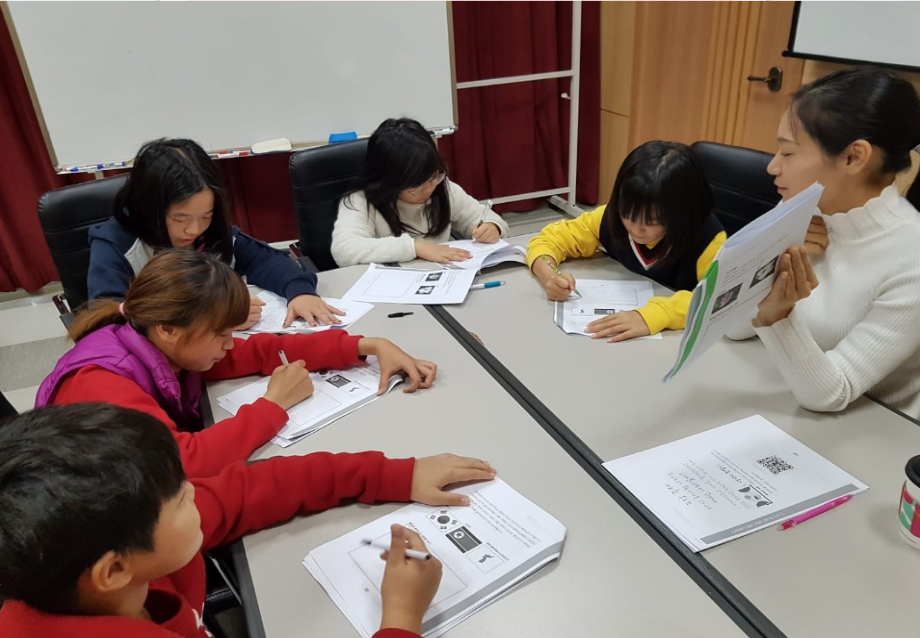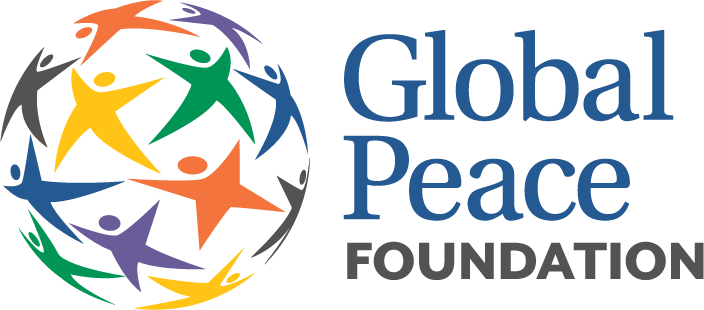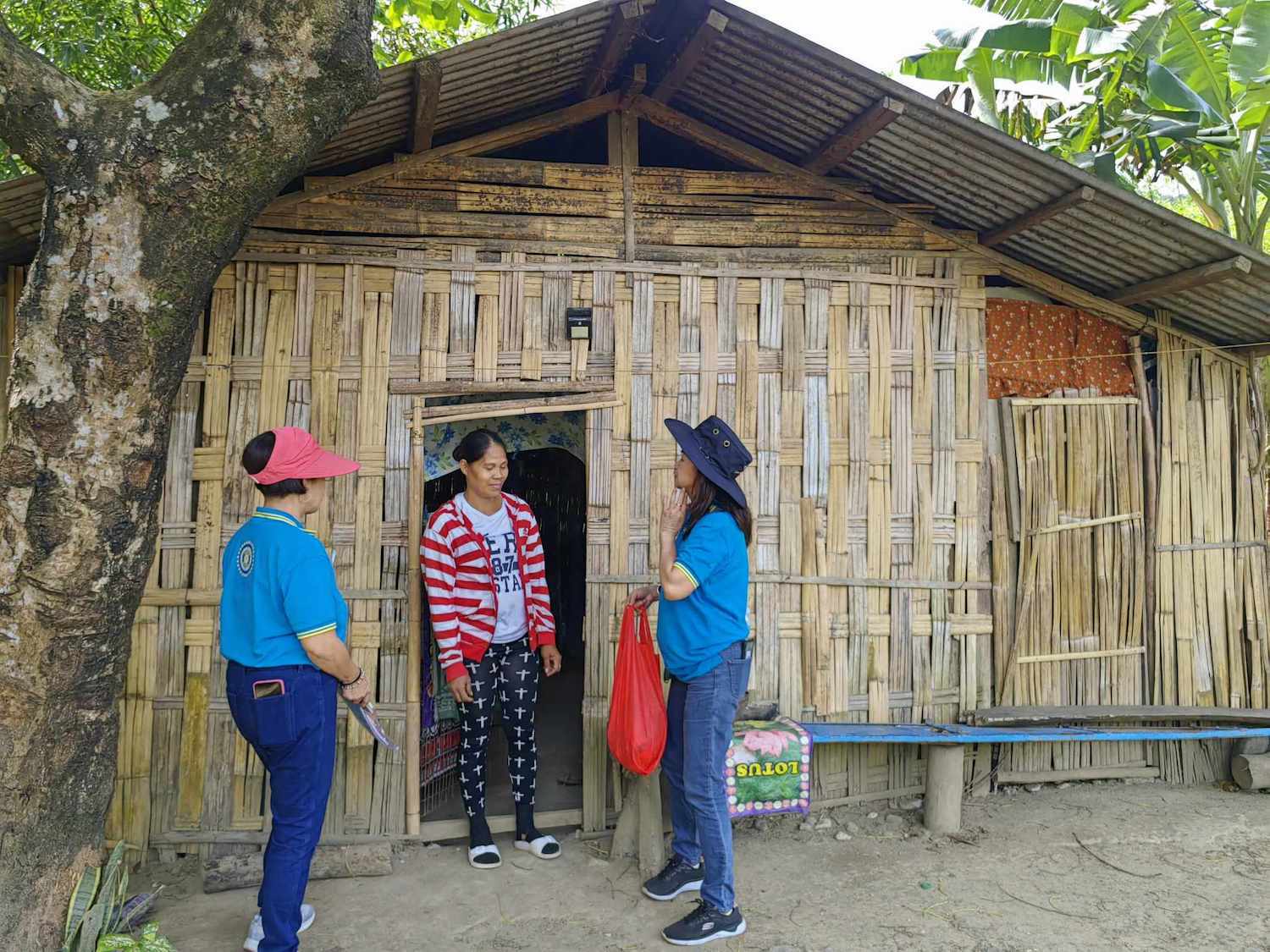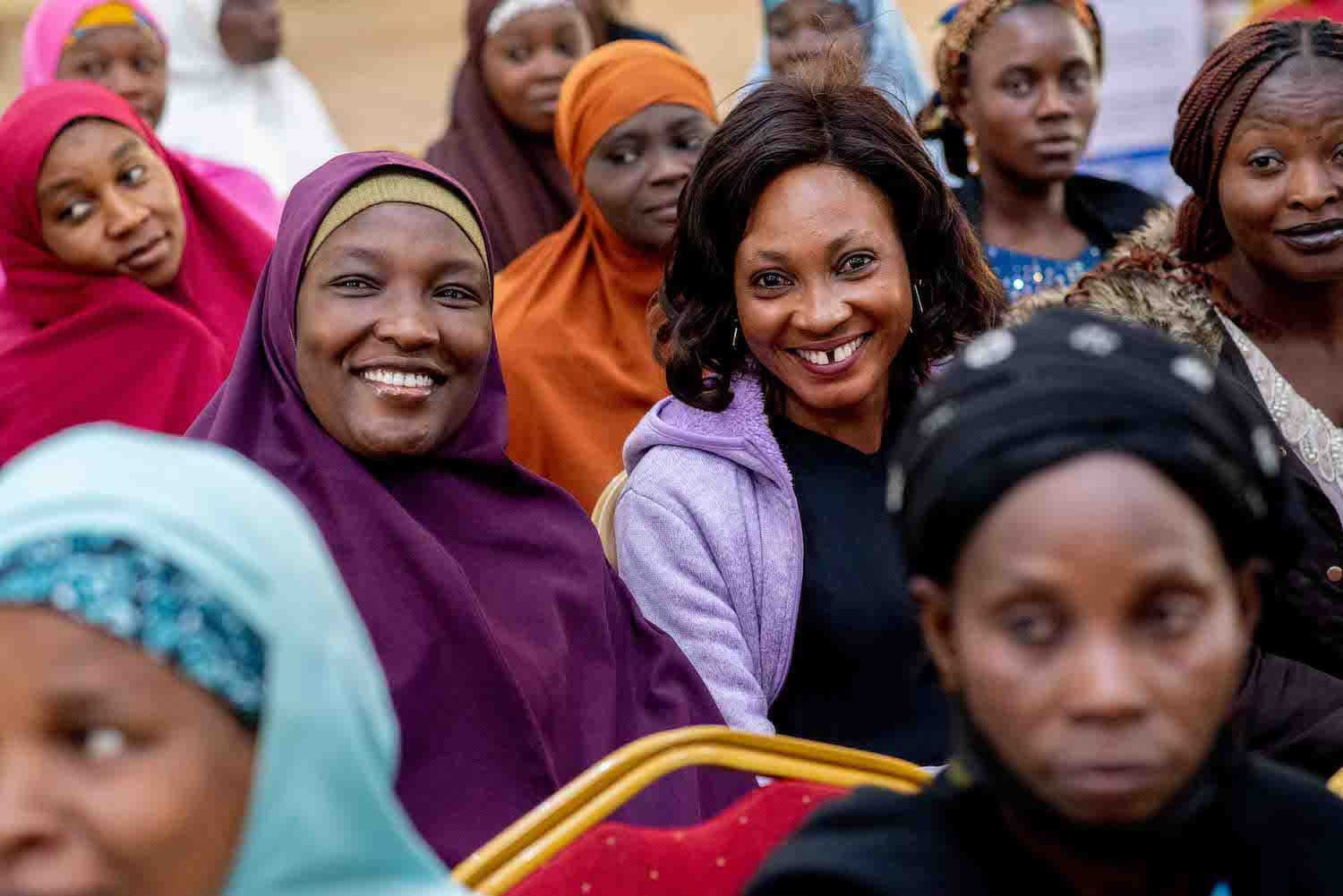“Many experts say that the current era of low-grade elementary school students living as adults will be the era of unification of the Korean Peninsula,” said Nakako Furuta pointing to a 2015 Economical Review by Thomas Frey who believed unification could take place at any time. Nakako, although Japanese herself, is a strong advocate for peace on the Korean peninsula. She is a wife and mother of three half Korean children living in Korea for three years. As a delegate of the Global Peace Women Leadership Academy, she wanted to create a Korean Dream Workbook for elementary school students.
As a Japanese immigrant to South Korea, Nakako, experienced first hand the international effect a united Korea can have in the surrounding region after being healed of the decades-long tragedy of colonialization and division on the peninsula. Creating a Korean Dream workbook was part of her encouragement to her own children.

Mothers gather to review the Korean Dream workbook created by Nakako Furuta
Working with students between ages six to twelve, as well as their parents, Nakako carried out the ambitious project from April 2018 to February 2019 in Seoul, South Korea. She introduced the workbook as a tool to be used at home with both children and parents who have the most influence on their children’s values, emotional and social growth, and overall character. As said by Dr. Junsook Moon in her address to women leaders at the 2019 Global Peace Convention, “Familial relationships encompass the most intimate and enduring relationships of love, even more sacred than religion. This is why parents and family have tremendous influence in shaping a person’s character.” Children learn to cherish and embody the ideal of hongik ingan and carry it on through adulthood through the influence of trusted adults in their life, not through government mandates. Dr. Moon described the “Korean Dream,” a vision for a free, unified, prosperous nation that upholds human rights and freedoms for all Koreans, embodying the ancient Korean ethos hongik ingan,
“Hongik Ingan, which means to live for the benefit of all humanity, is the founding aspiration of Korea. This simple phrase contains profound spiritual meaning that transcends history and time. Korean reunification cannot be achieved through short-sighted policies based on the geopolitics of the last 10, 20 years. The Hongik Ingan ideal that runs through the Korean Dream represents the destiny and yearning of the Korean people, its DNA.”
Currently, unification education is being provided by some NGOs and public elementary schools in Korea. However, Nakako’s innovative idea is bringing vision-based unification education to the home, where parents’ attitudes and values to welcome reunification can have the greatest influence on the next generation. Following the story of two siblings divided by the 38th parallel and longing to see each other again, the workbook provides a touching and relatable reminder for many Korean families of the importance of building a culture welcoming reunification starting from the home.
“My daughter is usually a very bright girl. But one day, she came back very disheartened. She overheard her classmates speaking badly of Japanese, and this made her very ashamed of her half-Japanese heritage. As a Japanese myself, I wanted my children to feel proud of who they are. I created this workbook because I want my children to look towards a hopeful future, especially to build upon a peacefully reunified Korea.”

Nakako talks about the Korean Dream with elementary students
Nakako hopes that her workbooks will continue to help parents feel a sense of ownership to educate children on the values and vision of hongik ingan who they hope will live in the era of a unified Korea. Parents of the children who participated in her workshops expressed their gratitude to be a part of the project. One thanked Nakako for interpreting the Korean Dream for children with “easy-to-understand” text and drawings. “It has become an opportunity for parents to learn about the history of the past seven decades on the Korean Peninsula and to see the unification of the peninsula through a courtly perspective rather than with fear or anxiety,” another parent said.
Nakako anticipates that the workbook guide will especially help mothers take an interest in unification education, inter-Korean unification, and ultimately world peace; developing a view into the future of society and children today, and awaken new female leaders starting with their families.
In addition to creating the workbook, Nakako conducted classes using other unification education materials she created for children and worked with parents to gain feedback on improving unification education.
Learn more about the Korean Dream.



